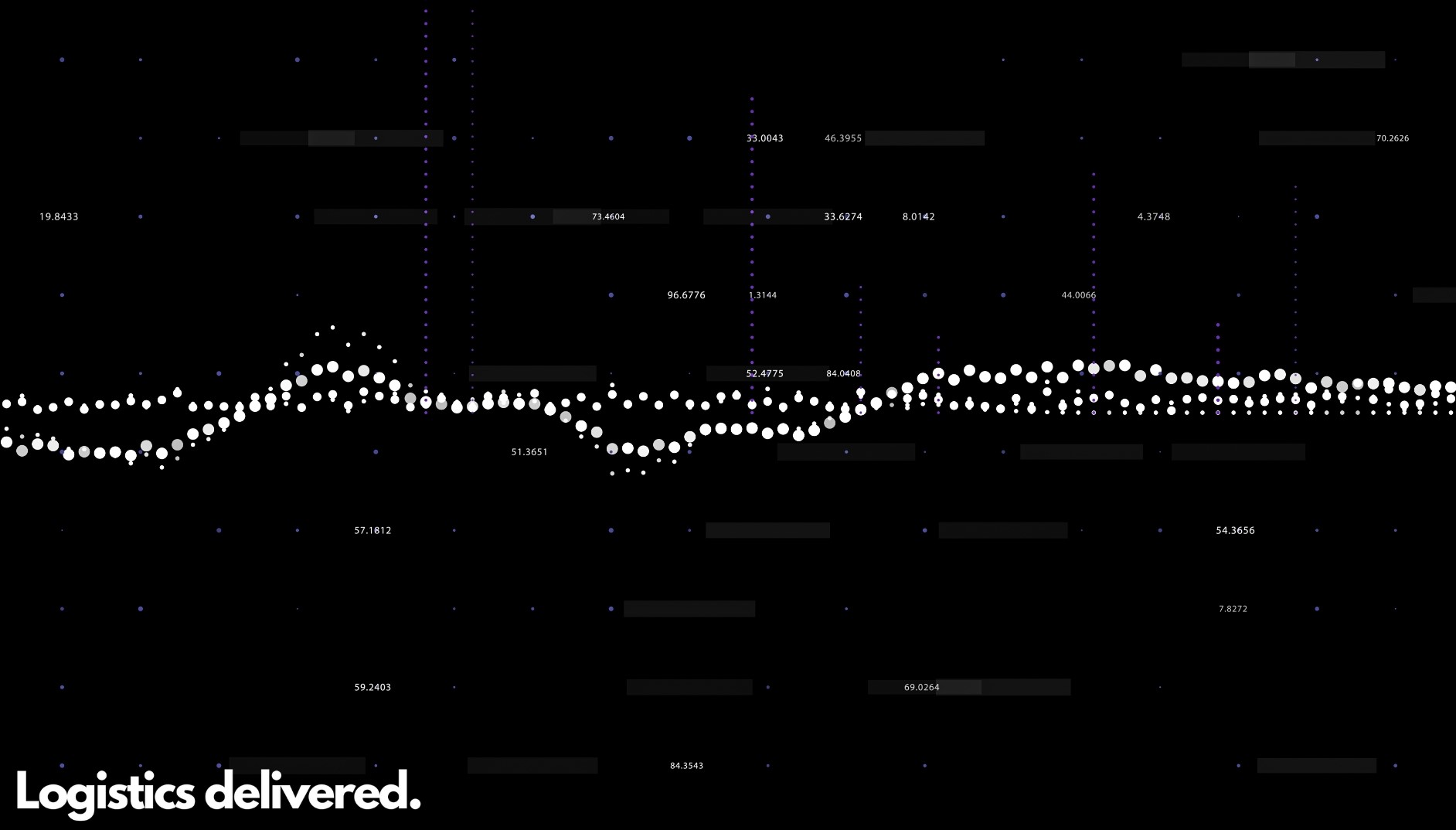Accounting systems, ERP systems (Enterprise Resource Planning), and WMS (Warehouse Management Systems) are central and essential tools for many companies. Smaller businesses often manage with just an accounting system. In larger organizations, an ERP system is almost always necessary. It’s common to equate accounting systems with ERP systems, but this is a mistake. Accounting systems are used to manage tasks like cash flow and tax reporting.
An ERP system, however, is much more comprehensive, with functionalities that cover procurement, sales, production, inventory, and material flow management. These systems can be seen as an infrastructure solution capable of handling all the resources and processes of a company. The basic functions found in an accounting system are typically included in ERP systems. ERP systems provide efficient management and control of all critical business processes needed to run a company, including inventory management, logistics, and deliveries. They integrate and synchronize all processes.
Despite the vast capabilities of ERP systems, and their ability to manage inventory and logistics processes, there is a clear trend today where many companies supplement the inventory-specific functionalities of ERP systems with dedicated WMS systems. What drives this trend, and what do WMS systems offer that ERP systems cannot?
When the world changes, the demand for efficient warehouse management grows
Several factors contribute to the growing interest in and need for WMS systems. Disruptions in global trade, wars, pandemics, high-interest rates, economic downturns, and changing customer behaviors have put increasing focus on system support and warehouse management routines. Logistics costs are high in companies where inventory and distribution are central to the business. Shrinking margins often require detailed control of inventory and logistics processes to maintain profitability. There is also a growing need to quickly adjust processes and respond to changes in the market and customer demands. While not all businesses face these challenges, for many, the question of whether a WMS system is needed as a complement to ERP is becoming increasingly relevant.

Why do companies complement ERP systems with WMS systems?
There are similarities between ERP and WMS systems, and to some extent, they can meet the same needs when it comes to managing goods flows. Many companies also do well with the inventory-specific standard functions of ERP systems. In these companies, inventory management is important, but it is not a critical part of the company’s value chain in the same way as, for example, in e-commerce companies, wholesalers, and trading companies. This means that trading in goods is not part of the core business, and inventory management is therefore not crucial to profitability.
The processes around the warehouse are rarely complex and dynamic, and the need to anticipate future needs and changes in the supply chain is lower. Therefore, the inventory functions of ERP systems are fully sufficient to provide the necessary overview. A typical example of an industry where the inventory-specific functions of ERP systems are fully adequate is the manufacturing industry. Should the need for expanded functionality arise, ERP providers often offer the possibility to purchase various inventory-specific WMS modules.
WMS is often more flexible and can be tailored specifically to manage and optimize warehouse processes, while ERP (Enterprise Resource Planning) systems are more standardized and designed to cover a broader set of business needs. A WMS is a specialized tool that focuses on improving warehouse operations, while an ERP system is an integrated platform that manages a wide range of business processes, including basic inventory management.
For example, here are some ways in which a WMS offers support and functions that an ERP system might not provide to the same extent:
- Real-time inventory updates: WMS is designed to continuously update inventory balances as soon as a change occurs, providing an accurate and up-to-date picture of availability. ERP systems may sometimes have a slight delay in updates.
- Optimization of order picking and packing: A WMS can optimize how customer orders should be picked, packed, and consolidated based on specific requirements and efficiency, whereas ERP systems often have more general functions for these processes.
- Adaptation to warehouse layout and equipment: WMS takes into account details such as warehouse layout, equipment, and customer-specific requirements to improve inventory management, something that ERP systems may not be as specialized in.
- Prioritization and allocation of tasks: WMS can effectively prioritize and allocate tasks based on available resources and time dependencies, making it capable of handling complex warehouse processes more efficiently than an ERP system, which may have more limited functions in this regard.
Thus, WMS is often better suited for detailed and dynamic inventory management, while ERP systems offer a more comprehensive solution for managing the entire business.
ERP systems automate and digitize business processes
Companies looking to streamline operations and create solid foundations for growth typically choose to invest in ERP systems. Most companies start with standalone tools like Excel and smaller systems to manage different processes. As an organization grows, the need to consolidate all business information into a unified system usually increases. This consolidation saves time, improves control and oversight, and provides better data for decision-making. ERP systems meet these needs, and when there is a need to automate and digitize a company’s business processes, an ERP system becomes a necessity.
In an expanding company where the core business involves selling goods and managing inventory, a situation may arise where the inventory functionality of ERP systems is insufficient. An example is when the systems do not provide sufficiently detailed control and management of logistics flows. When logistics costs are high, detailed control is often required to turn a profit. This is the reality for many e-commerce companies that have faced tough market challenges in recent years, with reduced profitability, increased competition, and changing customer behaviors. A statement that illustrates the importance of logistics for e-commerce companies is: “If two competing companies have similar businesses, the one with the best logistics will win.”
To streamline logistics flows and inventory management, and gain detailed cost control, there is the mentioned possibility of expanding the WMS functionality within an ERP system. Another option is to invest in a separate WMS system that can either be standalone or integrated with the ERP system.

Signs that an ERP system is not enough
Sometimes companies find themselves at a crossroads: should we use the WMS functionality in our ERP system, or should we invest in a dedicated WMS system that integrates with the ERP? Since many ERP systems also offer inventory management functions, it’s not always easy to determine which option is best. A company might manage with ERP up to a certain point, but as processes become more complex, demands increase, and the ERP system may no longer be sufficient. Here are some common indicators that a company might need a complementary WMS system:
- The warehouse is disorganized, and it’s difficult to get accurate inventory counts.
- There is a desire to automate and simplify warehouse work with robots and other support systems. A high level of automation almost always requires a WMS system.
- If traceability requirements increase, and if products have expiration dates, tools like handheld devices and barcode scanners are often needed. WMS systems have built-in support for such technology.
- Employees are forced to supplement ERP functionality with their own spreadsheets and other manual solutions, a clear indication that the ERP system is not sufficient.
- Market and customer demands are changing, and efficiency needs to improve to, for example, offer good service levels with quick deliveries. This requires optimized inventory levels and access to real-time data. ERP functionality rarely provides sufficient support for this.
WMS systems: a key component in supply chain management
The biggest difference between ERP and WMS systems is that WMS offers greater capabilities to optimize inventory based on real-time information and historical trends. WMS provides both reactive and proactive control. Inventory management is more accurate, and it’s easier to adjust logistics processes and respond to market fluctuations and changes. Omnichannel commerce, seamless shopping, shorter seasons, more frequent and smaller deliveries, and customer demands for faster deliveries have created significant challenges for many logistics managers and warehouse operators. This is also one of the reasons for the growing interest in WMS systems and why WMS is now a key component in Supply Chain Management.
A WMS system is specifically designed to support and optimize daily operations in companies where inventory and distribution are an important part of the core business. Besides inventory management, WMS is also a tool for picking and packing processes as well as analysis. The system streamlines every aspect of warehouse management, from receiving, storing, picking, packing, and delivery processes to inventory tracking and replenishment. WMS systems are often integrated with tools and systems for barcode scanning, RFID tagging, handheld computers, and transportation management systems (TMS).
The deep functionality of WMS systems offers many benefits
The core functionality of a WMS system supports a wide range of activities within inventory management and logistics. Since many different aspects of a supply chain can be optimized with WMS, there are also many advantages. Among the many positive effects, some are particularly noteworthy. One is the potential for improved operational efficiency. Automating the entire warehouse process allows for the handling of larger volumes without requiring more staff. Unnecessary work and duplication are eliminated as there are fewer errors in picking and shipping. The ability of a WMS to provide faster deliveries with fewer mistakes can strengthen both customer loyalty and supplier relationships.
As a warehouse management system, a WMS also enables the development and improvement of work planning. It becomes easier to anticipate labor needs and efficiently allocate tasks. Real-time inventory visibility with the help of various tracking technologies is often seen as one of the most important benefits of WMS. This visibility enables more accurate demand forecasting and just-in-time strategies. WMS can also achieve significant cost savings for companies with perishable or date-limited goods. The system can determine which items need to be picked first from the warehouse, reducing the risk of costly waste.
Other benefits include simplifying tasks for staff who have access to the WMS system via mobile devices and tablets and are not tied to terminals for information retrieval, reducing manual labor through automation, easier inventory management, greater transparency, and traceability.
Understanding and analyzing the degree of warehouse complexity is crucial
Many factors influence the demands on a warehouse and, therefore, the functionalities needed in a system to achieve efficient inventory management. It is a common misconception that a small warehouse is simpler than a large warehouse with the same needs. The reality is that warehouse complexity can vary greatly, and this complexity can be categorized into several levels. From the simplest warehouse to highly automated warehouse and distribution centers. For those responsible for supply chains, it’s important to understand their warehouse complexity and have full insight into which level best describes their warehouse and logistics operations.
In a simple warehouse (Level 1), there are relatively few storage locations, and many processes are manual and not system-controlled. Practically all ERP systems can provide sufficient support at this level. At the next level (2), warehouse operations are more extensive, but the need for system support is still covered by the WMS functionality in many ERP systems. At Level 3, warehouse operations become more complex, with more storage locations and more demanding logistics and inventory management needs. This level is common in small and medium-sized warehouses, and the WMS functionality in an ERP system is often sufficient. However, in certain situations, complementary software or third-party WMS systems are needed.
Level 4 represents large and complex warehouses where dedicated WMS systems provide system support for every aspect of inventory management. This level of WMS functionality is sometimes needed in smaller warehouses with high demands on flexibility and control. Large warehouses, logistics centers, and distribution centers with automated flows are classified as Level 5. This level involves full automation with a WMS system providing the necessary infrastructure. ERP systems rarely provide sufficient functionality at this level.
The levels refer to Gartner (2021) and their description of “The Five Levels of WMS,” Apply an Architectural Framework to Stratifying Warehouse Management Systems.

The importance of WMS systems for e–commerce companies
In e-commerce, WMS systems often play a crucial role in enhancing customer experiences and ensuring satisfied and repeat customers. The functionality of WMS is important both during the purchase process and afterward. Proper inventory management and accurate stock levels are prerequisites for quickly providing customers with accurate information about product availability and fast order fulfillment. Many customers expect delivery as soon as the next day, which requires efficient order management. Today, fast order handling is a significant competitive advantage, and the same applies to returns. Rapid return processing also helps strengthen customer loyalty.
E-commerce customers expect precise updates when items are shipped and information on when they will receive their purchases or refunds for returns. WMS systems provide more detailed information than what is possible with ERP systems, which is crucial in the competitive e-commerce landscape.
Situations where orders go through but the ordered items are not in stock do not build customer loyalty! When a WMS system provides complete visibility into stock levels, it also reduces the risk of overstock and costs associated with obsolete goods. Other benefits include the ability to optimize warehouse productivity with fast and accurate picking. Picking routines can be automated, and real-time information access helps warehouse staff with planning.
ERP systems will remain important, but the need for WMS systems is increasing
The functionality of ERP systems for inventory and logistics management will always be sufficient for many companies. At the same time, the trend shows that more and more businesses need to manage their inventory and logistics processes in greater detail to reduce costs, improve profitability, increase competitiveness, and enhance customer service levels. This can be achieved by integrating WMS systems with ERP systems or using dedicated WMS systems that can be standalone or cloud-based.
A market analysis of warehouse management systems in Scandinavia (conducted by HerberthNathan & Co) shows that WMS systems can lead to cost reductions of up to 30% and a ROI in just 9–18 months. The significant potential for savings drives interest in WMS, but the list of advantages over ERP can be made considerably longer (see also above under the heading “The Deep Functionality of WMS Systems Offers Many Benefits”):
- Cloud solutions with straightforward configurations
- Automatic system updates on a monthly or weekly basis
- Real-time control over all warehouse processes
- Reduced waste and increased traceability
- Simplified work routines with mobile and tablet functionality
“Which option is best for us?”
Choosing between an ERP and a WMS system, or a combined solution where WMS is integrated into ERP, is not always straightforward. There are many aspects to consider, and to make the right choice, it is crucial to invest time in thorough groundwork:
- Assess current needs and goals: What is most important for us to achieve? Is it reducing costs, organizing the inventory, increasing customer service levels, creating conditions for expansion, etc.?
- Evaluate future needs: Assess the company’s future and any new needs that may arise.
- Classify the degree of warehouse complexity: Which level (see above) best describes the current operations?
- Review current functionality and identify gaps: Companies with ERP systems should analyze existing functionality and identify what might be missing. Can the ERP system meet new requirements, or is a complete WMS solution needed?
- Collaborate across departments: Sometimes, the logistics department drives the decision to potentially choose a WMS system. Other times, it may be the IT department taking the initiative. To get a comprehensive view of needs and requirements, it’s best to form a working group that considers all important aspects. Employees from sales and marketing departments can also be crucial to include customer-side requirements.
In summary, it is clear that ERP systems (Enterprise Resource Planning) and WMS systems (Warehouse Management Systems) play central roles in a company’s business processes, particularly when it comes to managing resources and inventory. While ERP systems provide extensive support for many business functions, including basic inventory management, WMS systems fulfill a niche role by optimizing and detailing warehouse processes to meet today’s high demands for efficiency and customer service.
Contact us if you want to discuss how your company can benefit from integrated or separate ERP and WMS solutions to maximize productivity, reduce costs, and improve delivery levels.